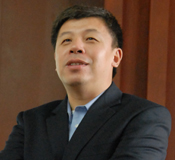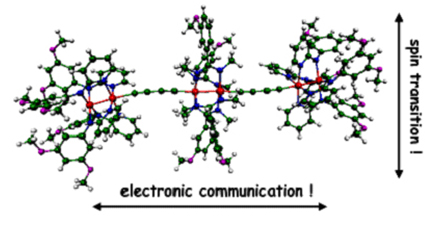Organometallic Molecular Wire Research
2010-01-15

Professor Inorganic Chemistry
The Ren Research Group study of organometallic wires is featured as a Hot Paper in Angewandte Chemie.
Many groups around the world have investigated organometallic molecular wires based on the [M]-(C≡C)n-[M] typedimersand efforts in demonstrating wire characteristics in the [M]-(C≡C)n-[M]-(C≡C)n-[M] typetrimersdid not yield promising results.
However, Ren and coworkers reported the preparation and characterization of a[A]-(C≡C)n-[B]-(C≡C)n-[A] type compound, where [A] and [B] are two different type diruthenium units.
Extensive voltammetric, spectroscopic and magnetic studies indicate the existence of strong electronic and spin couplings between two [A] termini over a span of 20 Å. An additional DFT study yielded insight on the orbital origin of significant couplings.
This work demonstrates the feasibility of achieving extended wires (up to 10 nm) by inserting metal units as “relay stations” for electron flow.

Figure: [A]-[B]-[A] type molecular wire
Source:
Jie-Wen Ying, Isiah Po-Chun Liu, Bin Xi, You Song, Charles Campana, Jing-Lin Zuo, and Tong Ren, Angewandte Chemie 2009, in press (DOI: 10.1002/anie.200904674)